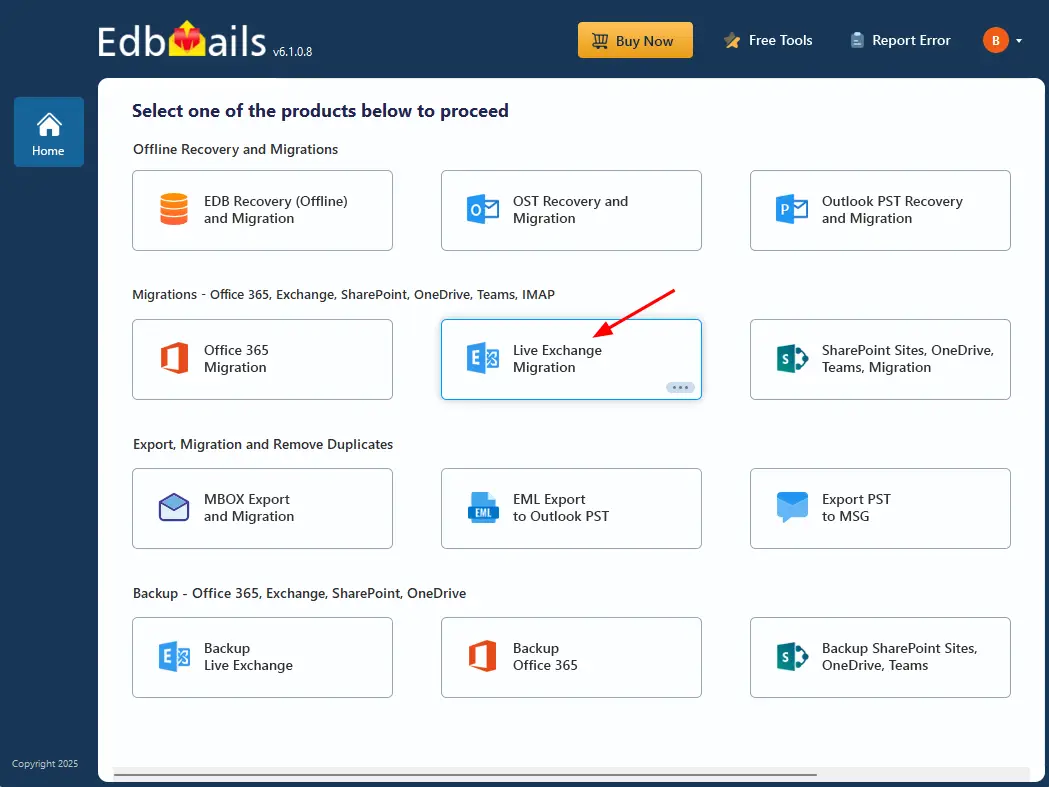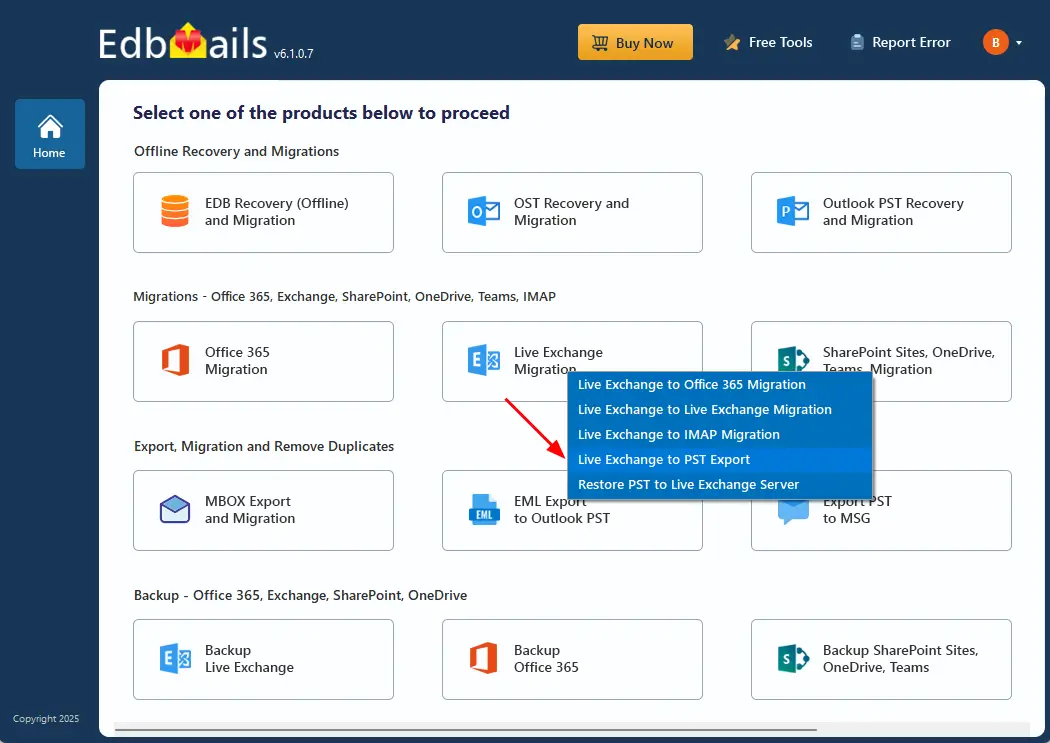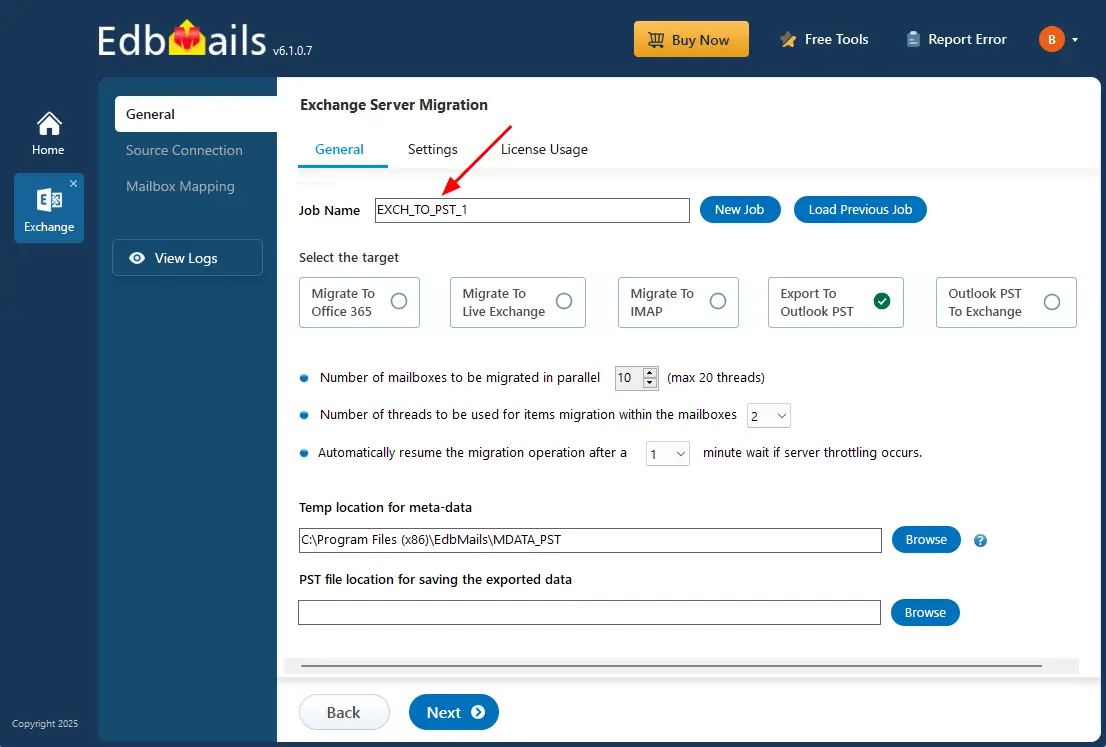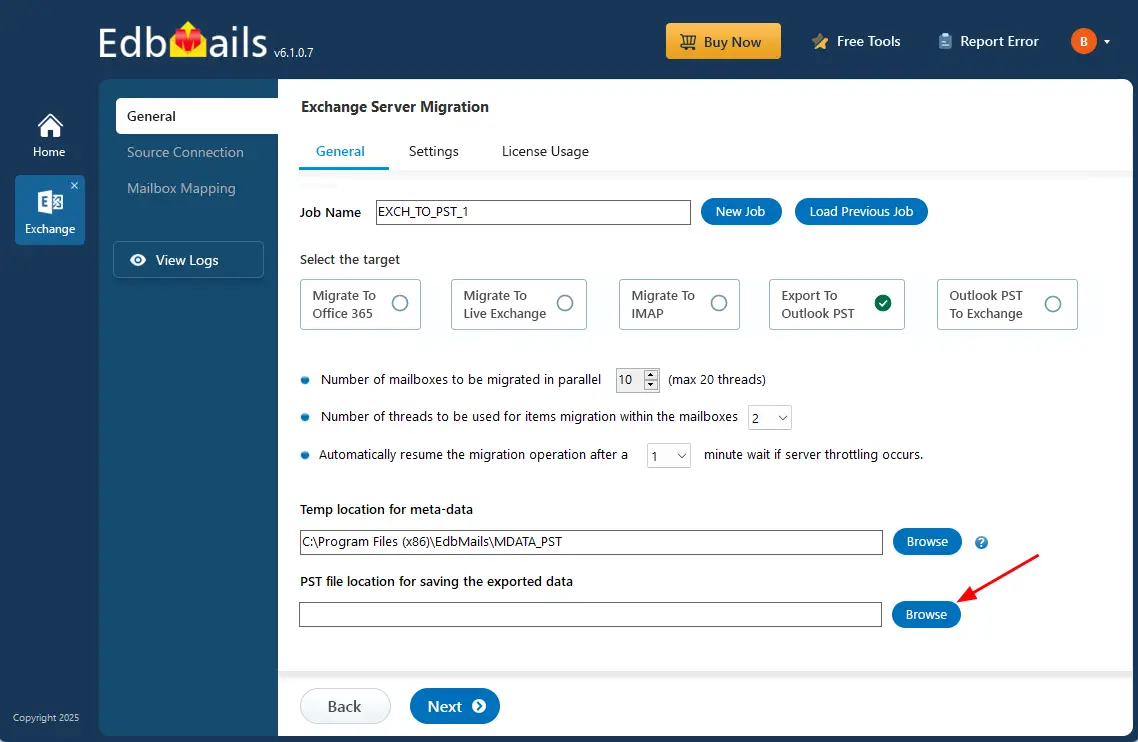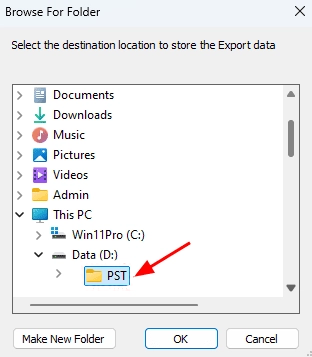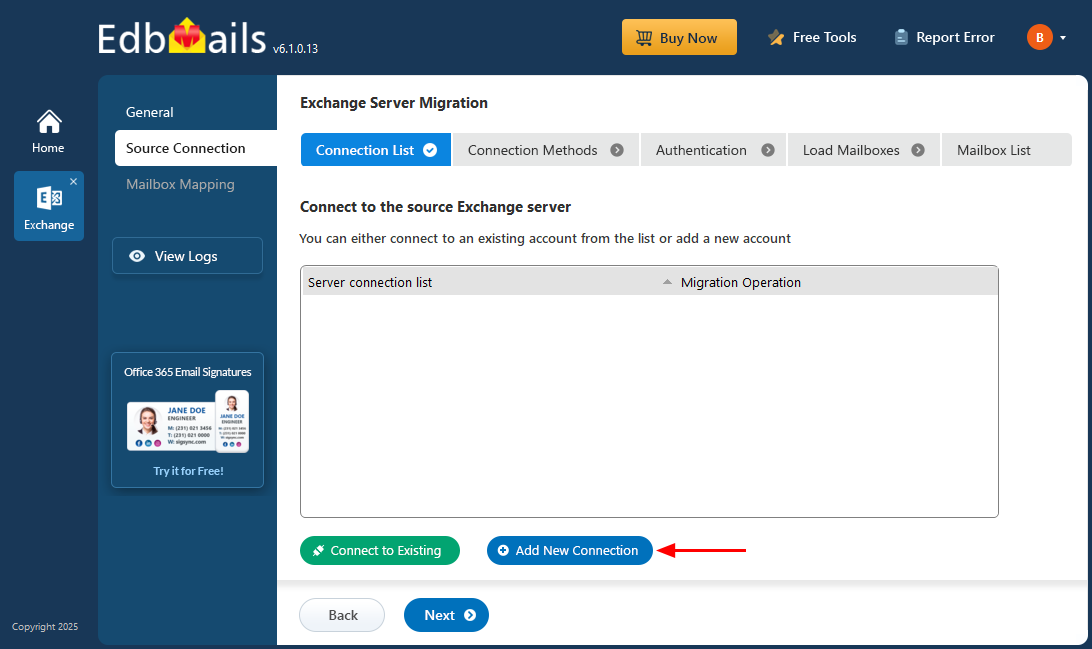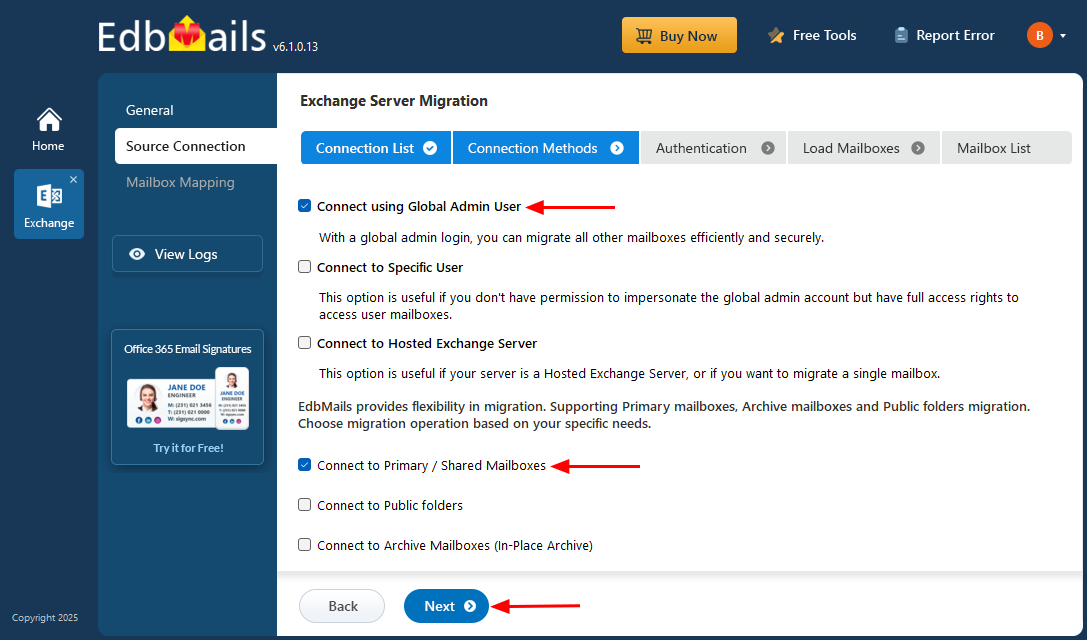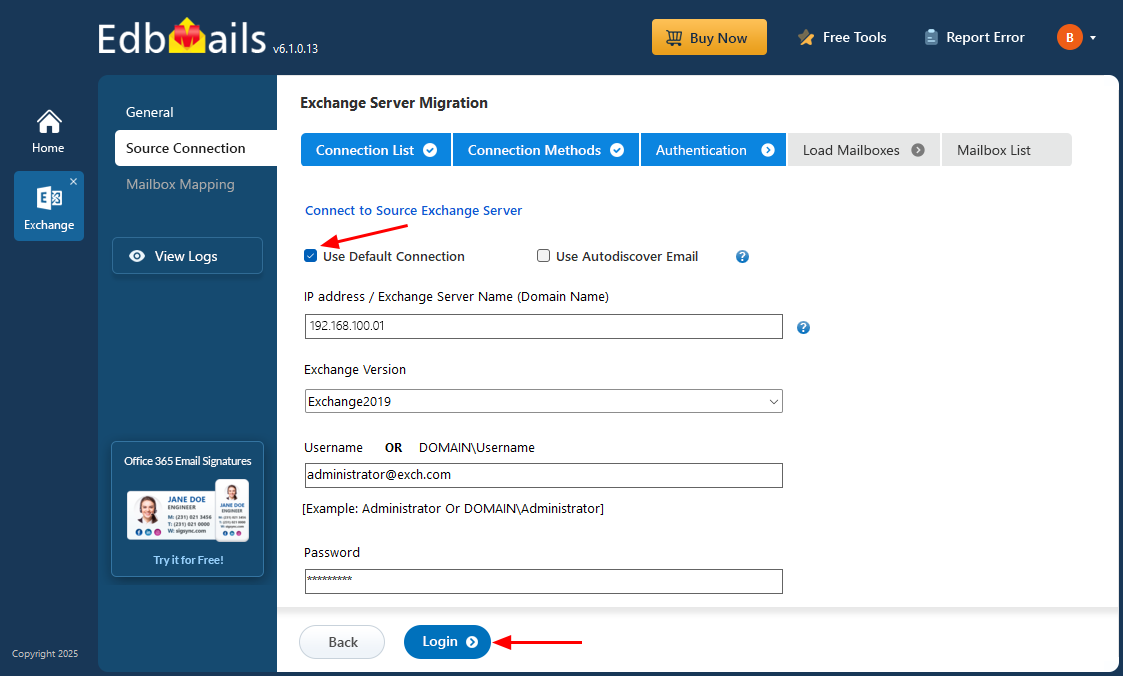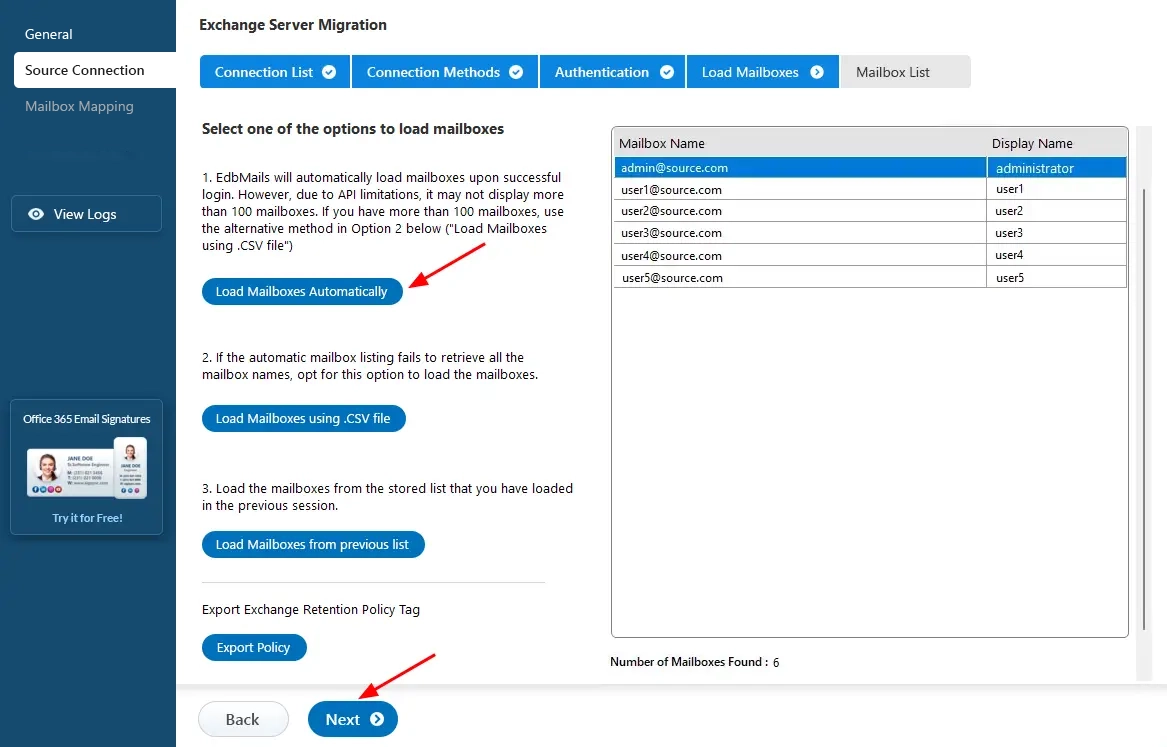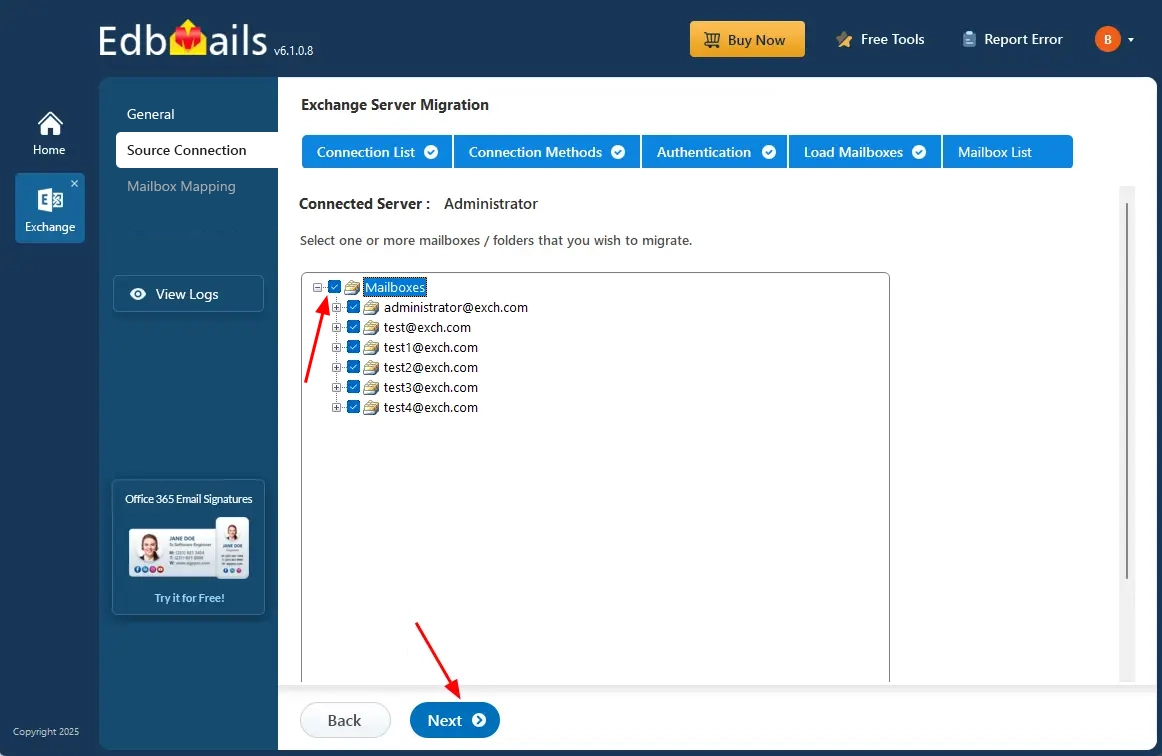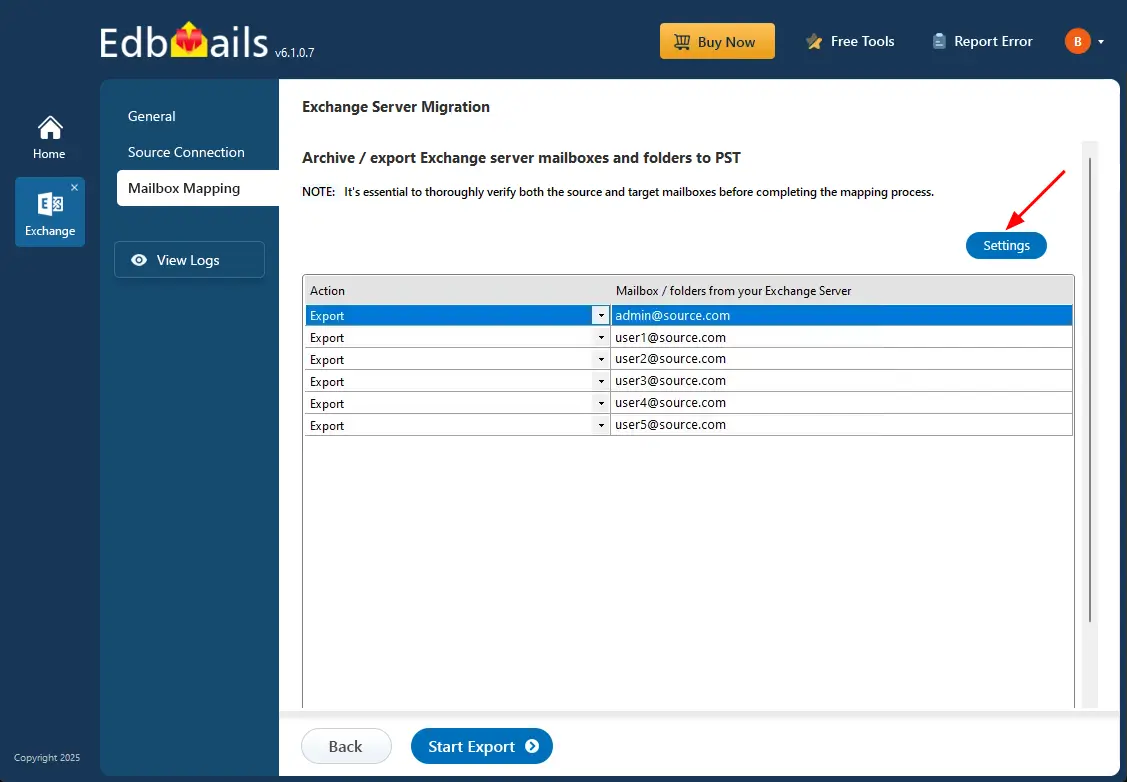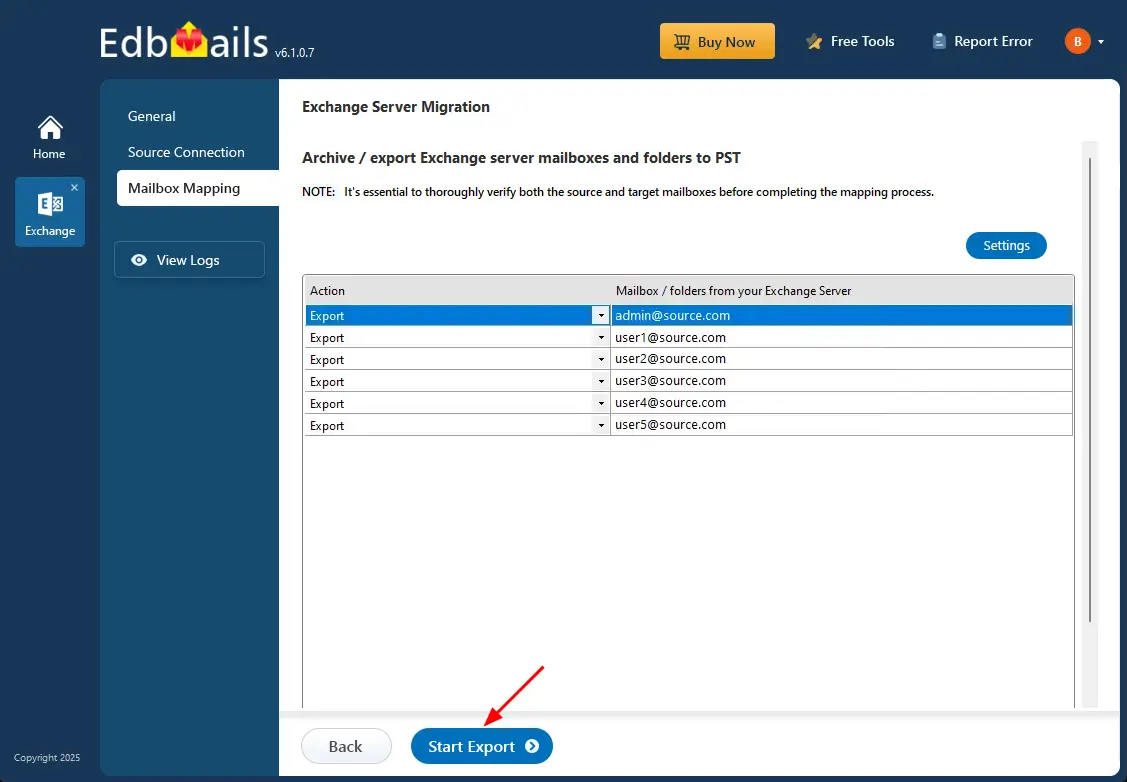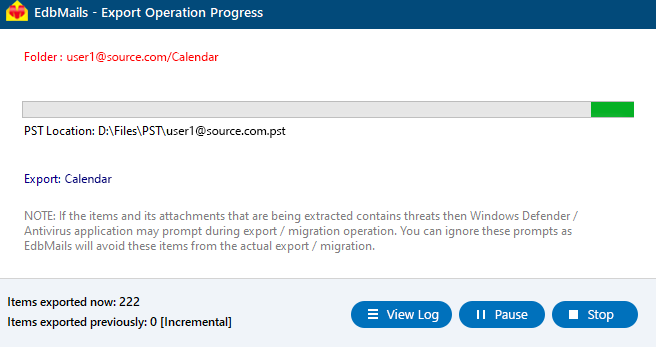- Products Exchange EDB / Email Recovery Tools
- EDB Recovery and MigrationRecover EDB to PST, EDB to Office 365 and Exchange NO Duplicate Migration
- OST Recovery and MigrationRecover OST to PST, OST to Office 365 and Exchange Migration
- PST Recovery and MigrationRecover Outlook PST, PST to Office 365 and Exchange Migration
- MBOX Export and MigrationExport MBOX to PST, MBOX to Office 365 and Exchange Migration
- NSF Export and MigrationExport NSF to PST, NSF to Office 365 and Exchange Migration
- EML to PST ExportEML files export to Outlook PST format
- PST to MSG ExportOutlook PST files export to MSG format
- MSG to PST ExportExport MSG files Outlook PST files
Exchange and Office 365 Migration- Exchange Server MigrationMigrate Exchange 2007, 2010, 2013, 2016, 2019 to Office 365 tenants. Also, migrate between Exchange servers and PST
- Office 365 MigrationMigrate Source Office 365 tenants to Destination Office 365 tenants. Also, migrate to Exchange Server and PST
- IMAP Email Backup & MigrationMigrate all IMAP email servers (Gmail, Zimbra, Zoho, Yahoo etc.), Office 365, Exchange and Backup to Outlook PST
- SharePoint Online MigrationMigrate documents, files and folders from SharePoint sites
- OneDrive for Business MigrationMigrate documents, files and folders from OneDrive
- Microsoft Teams MigrationMigrate Teams, documents, files and folders etc.
Exchange and Office 365 Backup- Office 365 BackupIncremental, Granular, Encrypted and Compressed Office 365 Mailboxes Backup
- Exchange Server BackupIncremental, Granular, Encrypted and Compressed Exchange Mailboxes Backup
- SharePoint, OneDrive & Teams BackupBackup Online site collections, Team sites, Office 365 groups, all documents etc.
- Duplicate Remover - Office 365, Exchange, IMAP & Outlook Remove duplicate emails, calendars, contacts, journal etc. from Office 365, Exchange, IMAP, Outlook, Gmail, Zimbra, Zoho Mail etc.
- More Products
- Features
- FAQ

Exchange Server Migration
User Manual
User Manual
- Exchange Migration Overview
- Initial Setup
- System Requirements
- Migration Scenarios
- Installation
- FAQ
- Videos
- Screenshots
- Understanding the Application
-
How it works?
- Exchange to Exchange
- Exchange to Office 365
- Exchange to PST
- Exchange to IMAP
- Exchange Public Folder to Office 365
- Exchange Public Folder to Exchange
- Exchange 2010 to 2016 Public folder
- Exchange 2013 Public folder to Office 365
- Exchange 2016 Public folder to Office 365
- Exchange Public Folder to Shared Mailbox
- Archive Mailbox to Office 365
- Archive Mailbox to Exchange
- Hosted Exchange Migration
- Hosted Exchange to Live Exchange Migration
- Hosted Exchange to Office 365 Migration
- Live Exchange to Hosted Exchange Migration
- Hosted Exchange Public Folder to Office 365 Migration
- Cross-forest migration from Exchange 2013 to Exchange 2019/2016
- Hybrid Migration
- Public folder Migration in Hybrid Environment
- Disable msExchMailboxGuid
- Exchange to Gmail Migration
- Multiple PST files to Exchange server
- Connect to Exchange server for multiple mailboxes migration
- Connect to Hosted Exchange for its Migration
- Connect to Office 365
- Set Exchange Server Impersonation rights
-
Knowledge Base
- Exchange to Exchange Migration
- Exchange to Office 365 Migration
- Migrate Legacy Exchange to Latest Exchange
- Cross-forest and cross-domain migration
- Public folder, Shared mailbox migration
- Archive mailbox migration
- Hosted Exchange Migration
- Incremental migration
- Cutover, staged and hybrid migration
- Migrate SBS 2003, 2008, 2011 to a Modern Exchange Environment
- Export Exchange Mailbox to PST
- Secure Exchange Migration
- Selective Mailbox / Folder Migration
- Automatic Mailbox Mapping
- Assign Public Folder to one target destination
- Multiple PST Restore
- No Impact on users - Zero downtime
- Migrate Email Rules, Forwarding and Junk Email Configuration
- Exchange migration speed and throttling management
- Support for all the languages
- Advanced settings and options
- GAL and all address lists Migration
- Exchange migration reports
- Best Exchange Migration software
- Exchange migration checklist
- Exchange migration manager
- Feature rich Exchange migration software
- Exchange to Office 365 migration planning
- Exchange server migration tips
- Export Exchange server users to CSV
- Migration Types
- Map the Mailboxes
-
Migration Walkthrough
- From Exchange 2003
- From Exchange 2007
- From Exchange 2010 to Exchange 2019
- From Exchange 2010 to Exchange 2016
- From Exchange 2010 to Office 365
- From Exchange 2013 to Exchange 2019
- From Exchange 2013 to Exchange 2016
- From Exchange 2013 to Office 365
- From Exchange 2016 to Exchange 2019
- From Exchange 2016 to Office 365
- From Exchange 2019 to Office 365
- From Office 365
- Exchange 2013 mailbox to PST
- Exchange 2016 mailbox to PST
- Exchange 2019 mailbox to PST
- Exchange 2010 mailbox to PST
- Multifactor Authentication
Export Exchange 2019 Mailbox to PST
Exchange Server 2019 has played a vital role in enabling secure email communication and collaboration within organizations. With built-in Mailbox and Edge Transport roles, it supports efficient data handling and smooth operations. However, with Microsoft ending support for Exchange Server 2019 in October 2025, it’s critical for businesses to begin planning their data retention and migration strategies well in advance.
One of the most reliable ways to preserve mailbox data is by exporting it to PST format. PST files offer long-term accessibility, making them ideal for archiving, employee offboarding, compliance, and recovery scenarios. As part of your Exchange migration planning, exporting to PST ensures your data remains accessible even after the server is no longer supported.
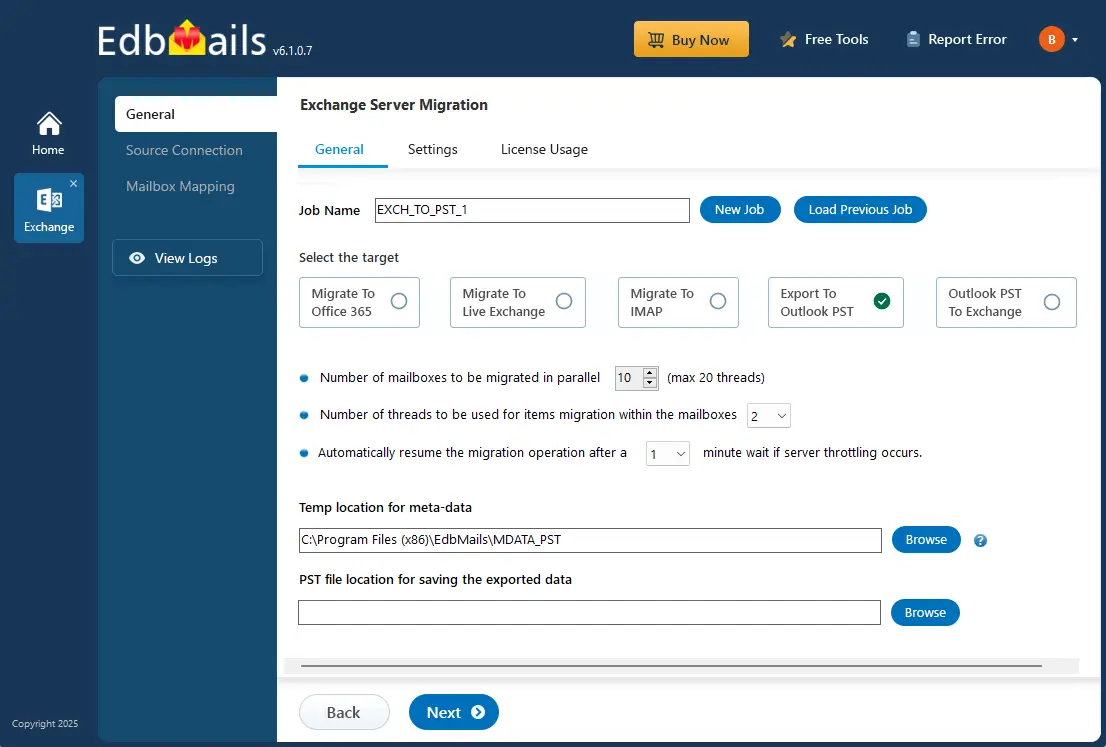
EdbMails Exchange migration software provides a powerful, easy-to-use solution to export Exchange 2019 mailboxes to PST. Unlike manual methods, EdbMails automates the entire process with features such as incremental export, advanced filtering, PST file splitting, and a free built-in PST merge tool. This ensures a secure, efficient, and error-free experience, even when dealing with large mailboxes or complex environments.
Whether you're preparing for an upgrade, decommissioning an old server, or archiving inactive accounts, EdbMails Exchange migration simplifies the task. It’s a trusted solution for IT teams looking to future-proof their data and maintain business continuity as Exchange 2019 approaches end of life.
Limitations of Native method:
The native method to export Exchange 2019 mailboxes to PST comes with several limitations that can hinder efficiency and data accuracy. The process is time-consuming and requires technical expertise to avoid human errors, which can result in incomplete or corrupted exports. Additionally, it does not allow for selective folder exports, making it difficult to manage large mailboxes effectively. The manual method also struggles with large data sizes. Users cannot split a large PST file, nor can they export multiple mailboxes at once. If the process is interrupted, there is no option to resume, forcing a restart. Furthermore, there’s no guarantee that the data hierarchy will be maintained, leading to potential data loss or disorganization.
Due to these limitations, many professionals prefer automated tools like EdbMails software that offer faster, more reliable, and error-free exports with enhanced features for handling large data sets and ensuring data integrity.
Why EdbMails is the best option over native method?
When it comes to exporting Exchange 2019 mailboxes to PST, EdbMails Exchange migration software is a smarter and more efficient alternative to the native method. With its intuitive, user-friendly interface, even non-technical users can complete the migration process without hassle, saving both time and effort. Unlike the manual PowerShell-based approach, which can be complex and error-prone, EdbMails simplifies every step of the export.
One of its biggest advantages is zero downtime, users can continue working with their Exchange mailboxes while the export runs in the background, avoiding disruptions and productivity loss. EdbMails also supports concurrent mailbox exports, allowing multiple mailboxes to be processed at once, which is especially helpful in large-scale environments where speed matters.
To further enhance the experience, EdbMails offers free 24/7 technical support, so you’re never left without help if questions or issues arise. With all these features combined - ease of use, performance, support, and reliability, EdbMails delivers a much more flawless and dependable solution than the native Exchange export method.
Prerequisites to export Exchange 2019 mailbox to PST
Step 1: Assign impersonation rights to the global admin userIf you're using a global administrator account to connect to your Exchange server, make sure it has impersonation rights. This permission allows the admin to access and export mailboxes on behalf of other users.
How to assign impersonation rights
Step 2: Install Microsoft Outlook on your computerEdbMails relies on Outlook to generate PST files. Make sure Outlook is installed on your computer with the latest updates. Also, ensure there’s enough disk space to save the exported PST files.
Step 3: Set up an Outlook ProfileTo ensure a smooth export, create a new Outlook profile
Steps to export Exchange 2019 mailbox to PST using EdbMails
Step 1: Download and Install EdbMails Exchange migration software
- Download EdbMails and install the software on your computer.
See the system requirements for using EdbMails to export Exchange 2019 mailbox to PST.
- Launch the EdbMails application and ‘login’ with your email ID and password, or click the ‘Start Your Free Trial’ option if you do not have account.
- Choose the ‘Live Exchange Migration’ option.
- Select 'Live Exchange to PST Export’ option.
- You can keep the default job name or choose the ‘New Job’ to change.
- Click the ‘Browse’ button.
- Choose the destination folder where you want to save the exported PST files. Ensure that there is enough disk space available to store them successfully.
- Download EdbMails and install the software on your computer.
Step 2: Connect to source Exchange 2019 server
- Use ‘Add New Connection’ to configure a new connection to the source Exchange 2019 server. For previously saved connections, just select it from the list and click ‘Connect to Existing’.
- Choose the required connection options and click the ‘Next’ button.
Learn more about Exchange server connection methods
- Using EdbMails, you can export mailboxes, public folders, and archive mailboxes from your Exchange server to Outlook PST files.
- Enter the details of your source Exchange 2019 server and then click the ‘Login’ button.
- EdbMails offers an auto-load option, which quickly fetches mailboxes for you. However, due to Microsoft’s API limitations, this method may show only up to 100 mailboxes. If your organization has more, use the Load Mailboxes using .CSV file option to import and access all mailboxes without restriction.
Step 3: Select the Exchange 2019 server mailboxes
Step 4: Start Exchange 2019 to PST export operation
- Double-check the mailboxes selected for export and ensure the ‘Action’ is set to ‘Export’.
- If you want to filter the data, click ‘Settings’ to apply options like date range, sender, recipient, CC/BCC, or message status. You can also choose to split the PST files. If no filters are needed, just continue without making any changes.
- Save the settings.
- Click the 'Start Export' button.
- The export operation is now in progress and can be monitored through the progress bar. Click the ‘View Logs’ button to access the export report. You can also pause or resume the export process at any point if necessary.
Advantages of EdbMails to export Exchange 2019 mailbox to PST
- Free PST merge tool
EdbMails provides a free PST merge tool that allows users to combine multiple PST files into one, ensuring no data corruption and easy organization.
- Split the output PST file
The software enables users to split large PST files into smaller, manageable parts, preventing issues with oversized files and maintaining compatibility with different email clients.
- Free trial
EdbMails offers a free trial, giving users the opportunity to evaluate its features and performance before purchasing, ensuring it meets their requirements for exporting Exchange 2019 mailboxes.
- Archiving and long-term data preservation
EdbMails supports flawless archiving and long-term data preservation, securely exporting older emails into PST format for easy access and compliance with retention policies.
- Migrate without data loss
EdbMails ensures a safe migration process, preserving mailbox structure and maintaining data integrity, ensuring no loss of emails, attachments, contacts, or calendar items during export.
- Detailed Log Reports for Auditing:
EdbMails automatically generates detailed log reports for every migration or export job. These include overall job summaries, mailbox-level item counts, excluded folder details, timestamps, and any errors or warnings. These reports help with clear auditing and documentation of the entire process.


